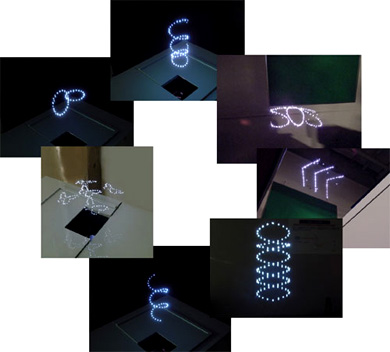
By David Ponce
Any sort of technology that uses precisely aligned, intersecting infrared lasers to create small amounts of plasma tends to worry us a little, seeing as plasma is, well, quite hot. That hasn’t stopped the folks at Japan?s National Institute of Advanced Industrial Science and Technology (AIST) from developing a true 3D display using this very technique. The device, on display at SIGGRAPH 2006, is able to produce up to 100 dots per second, which in turn are used to create a true, three dimensional image.
Certainly, at this point the technology is in its infancy, and the images created are primitive. But if anyone remembers monochrome monitors, they’ll understand the potential here. For a video demonstration, come right in.
[Daily Tech Article] VIA [TechEBlog]
[Update: Turns out, Erik So took this video, and we’d like to thank him. So, thank you for the vid, Erik. -Ed.]










